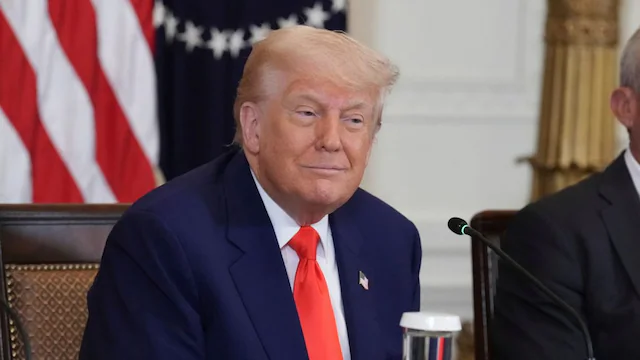- Courses
- GS Full Course 1 Year
- GS Full Course 2 Year
- GS Full Course 3 Year
- GS Full Course Till Selection
- Online Program
- GS Recorded Course
- NCERT (Recorded 500+ Hours)
- Polity Recorded Course
- Geography Recorded Course
- Economy Recorded Course
- AMAC Recorded Course
- Modern India, Post Independence & World History
- Environment Recoded Course
- Governance Recoded Course
- Science & Tech. Recoded Course
- International Relations and Internal Security Recorded Course
- Disaster Management Module Course
- Ethics Recoded Course
- Essay Recoded Course
- Current Affairs Recoded Course
- CSAT
- 5 LAYERED ARJUNA Mentorship
- Public Administration Optional
- ABOUT US
- OUR TOPPERS
- TEST SERIES
- FREE STUDY MATERIAL
- VIDEOS
- CONTACT US
Green Credit Programme (GCP) – Criticisms
Green Credit Programme (GCP) – Criticisms
05-04-2025

- The Green Credit Programme (GCP) was by the Ministry of Environment, Forest, and Climate Change (MoEFCC) as a voluntary initiative to incentivize eco-friendly actions.
- It aims to promote afforestation, water conservation, waste management, and other sustainable practices through tradable green credits.
- These credits can be used to meet environmental obligations or sustainability goals.
- However, despite its ambitious objectives, the GCP has faced significant legal scrutiny and environmental criticism.
- Critics argue that the program may inadvertently encourage forest land diversion, promote monoculture plantations, and undermine ecological integrity.
|
What is the Green Credit Programme (GCP)?
- Launch : Officially launched on December 1, 2023 , during the COP28 Climate Conference in Dubai by Prime Minister Narendra Modi and UAE President Sheikh Mohammed bin Zayed Al Nahyan.
- Purpose : To incentivize pro-planet actions in response to climate change and support Mission LiFE (Lifestyle for Sustainable Environment) .
- Objective : Encourage voluntary investments by individuals, industries, and organizations in sectors like:
-
- Tree plantation
- Waste management
- Water conservation
- Soil moisture conservation
- Rainwater harvesting
- Eco-restoration of degraded lands
- Green Credits : Tradable credits awarded for eco-friendly activities, which can be used to meet sustainability targets or legal obligations (e.g., compensatory afforestation under the Forest Conservation Act ).
Key Features of the GCP
- Voluntary Participation :
-
- Open to individuals, corporates, public sector undertakings (PSUs), and other entities.
- Non-mandatory but encourages proactive participation.
- Core Activities :
-
- Tree plantation
- Water conservation
- Waste management
- Soil moisture conservation
- Rainwater harvesting
- Eco-restoration of degraded lands
- Sustainable farming and biodiversity protection
- Calculation of Green Credits :
-
- One tree = One green credit (subject to a minimum density of 1,100 trees per hectare).
- Credits are calculated based on local silvi-climatic conditions.
- Trading of Green Credits :
-
- Credits can be traded on a domestic platform to meet sustainability targets or legal obligations.
- Listed companies can use green credits for ESG disclosures under SEBI regulations.
- Operational Structure :
-
- Pilot Phase : Focuses on tree plantation and eco-restoration of degraded lands.
- ICFRE Role : Indian Council of Forestry Research and Education (ICFRE) verifies and processes green credit applications.
- Land Allocation : State forest departments identify degraded land parcels (≥5 hectares) for plantation activities.
Progress So Far (As of March 4, 2024)
- 2,364 land parcels (totaling 54,669.46 hectares ) registered across 17 states.
- 384 entities registered, including 41 PSUs/CPSUs .
- Plantation work must be completed within 2 years after payment.
Criticisms of the Green Credit Programme
1. Incentivizing Forest Land Diversion
- Critics argue that the GCP may encourage industries and developers to divert forest land for industrial projects by purchasing green credits instead of preserving existing forests.
- This could lead to the substitution of old-growth forests with newly planted lands, which lack the same ecological benefits (e.g., biodiversity, carbon sequestration).
2. Degraded Lands & Ecological Impact
- The program promotes plantations on degraded lands, scrublands, and wastelands , which often provide important ecological services (e.g., carbon sequestration, wildlife habitat).
- Converting these areas into monoculture plantations could result in:
-
- Loss of biodiversity
- Disruption of local ecosystems
- Reduced ecological resilience
3. Conflict with Forest Conservation Laws
- The Forest Conservation Act (Van Adhiniyam, 1980) mandates land-for-land compensation for diverting forest land for development purposes.
- The GCP allows the use of degraded forest land for compensatory afforestation, undermining the principle of using non-forest land for compensation.
- Critics argue this may lead to compensating old forests with newly planted forests, which cannot replicate the ecological value of mature forests.
4. Supreme Court Intervention
- The Supreme Court is currently hearing an intervention application challenging the GCP.
- Concerns include:
-
- Long-term survival of plantation efforts
- Ecological validity of plantations raised under the program
- Environmentalists argue that arbitrary tree plantation efforts cannot replace old-growth forests , which offer vital ecological services.
5. Legal & Structural Issues
- The Ministry of Law and Justice has raised concerns about the legality of the GCP's business model, particularly regarding:
-
- The trade of green credits
- Whether the system is legally viable in the long term
- Questions remain about the program's alignment with existing environmental laws and its ability to deliver tangible ecological benefits.
6. Environmental Concerns
- Over 100 environmental organizations and 400 citizens filed a petition in April 2024 to rollback the GCP.
- Key concerns:
-
- Arbitrary plantation efforts may harm ecosystems rather than restore them.
- Monoculture plantations could exacerbate ecological imbalances.
- Lack of focus on preserving natural forests and their unique biodiversity.
Comparison: Green Credit (GC) vs Carbon Credit (CC)
|
Feature |
Green Credit (GC) |
Carbon Credit (CC) |
|
Governing Law |
Environment (Protection) Act, 1986 |
Energy Conservation Act, 2001 |
|
Beneficiaries |
Individuals, communities, private industries |
Primarily industries and corporations |
|
Objective |
Encourages environment-friendly actions like afforestation, water conservation, and sustainable agriculture |
Focuses on reducing carbon emissions by setting emission limits |
|
Market Mechanism |
Traded on a domestic exchange |
Traded in national and international carbon markets |
|
Climate Co-benefits |
May qualify for carbon credits, leading to reduced carbon emissions |
Cannot be converted into Green Credits |




